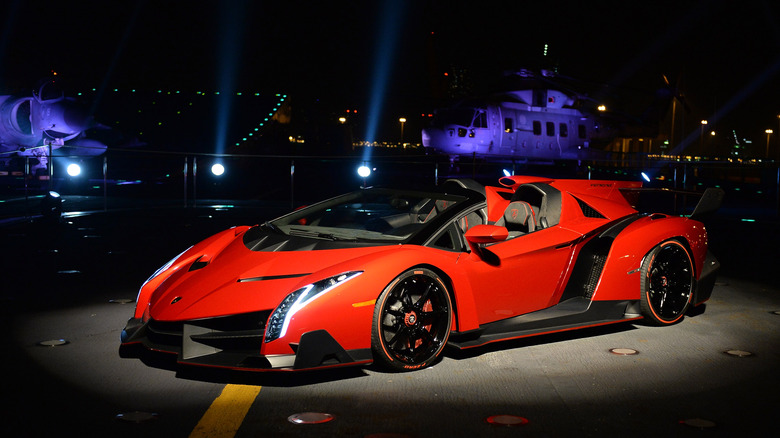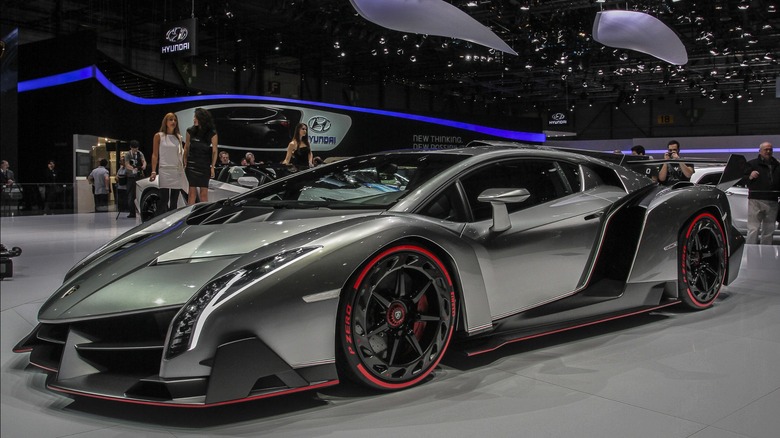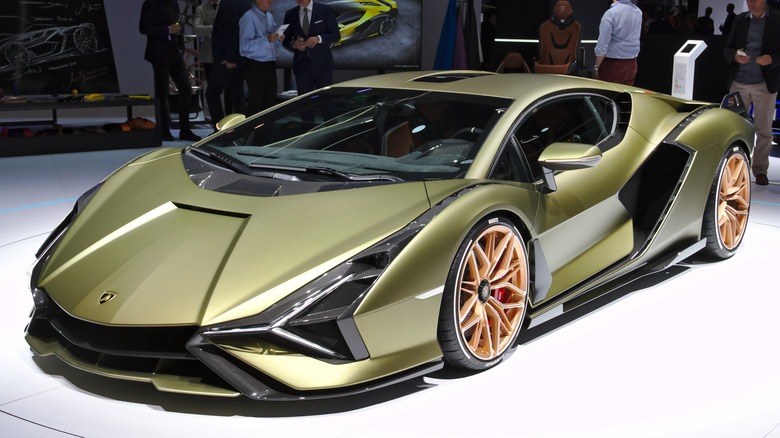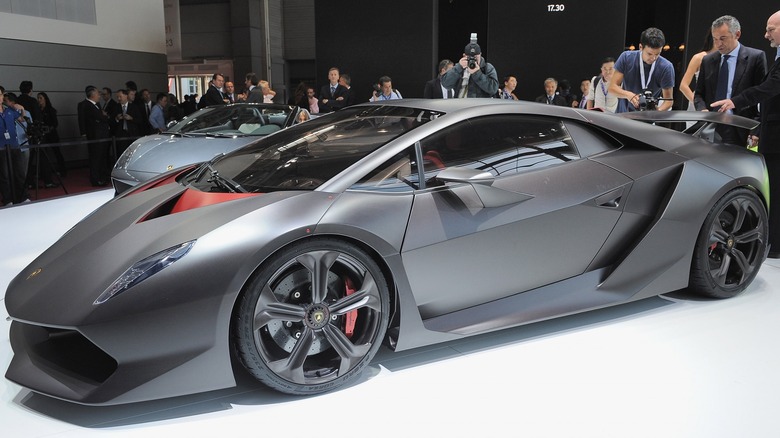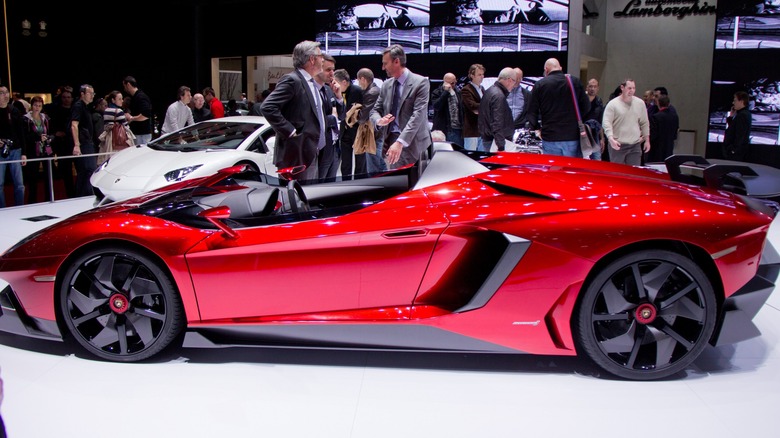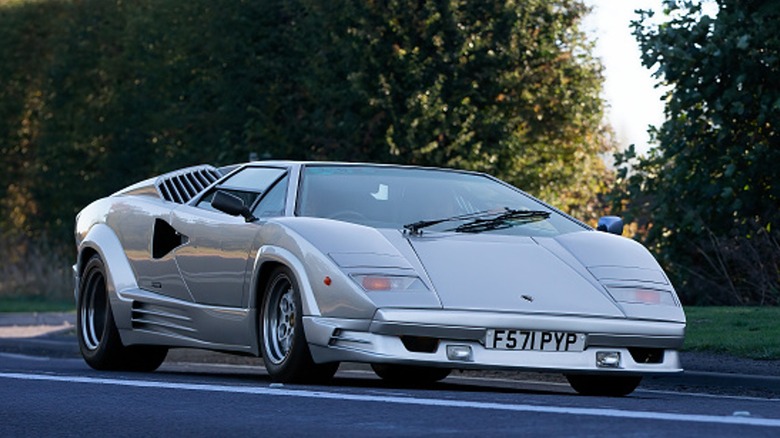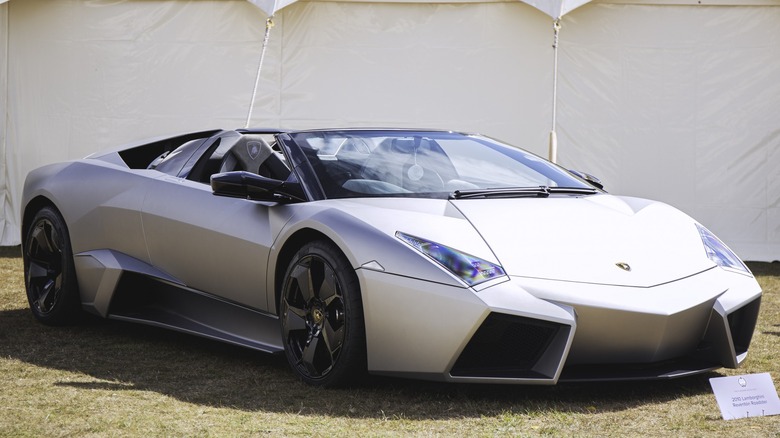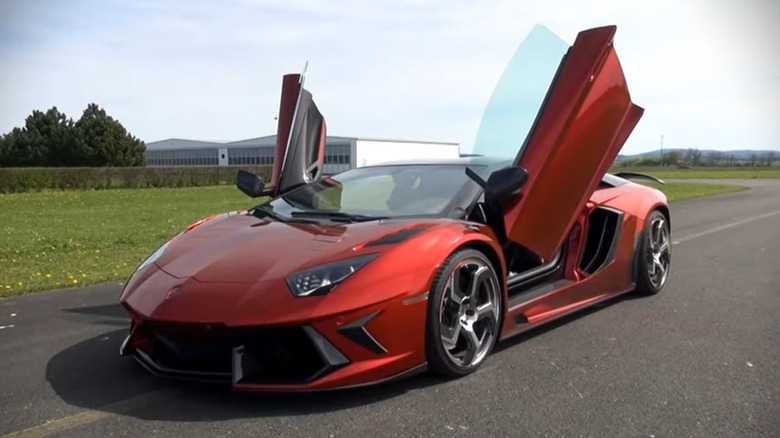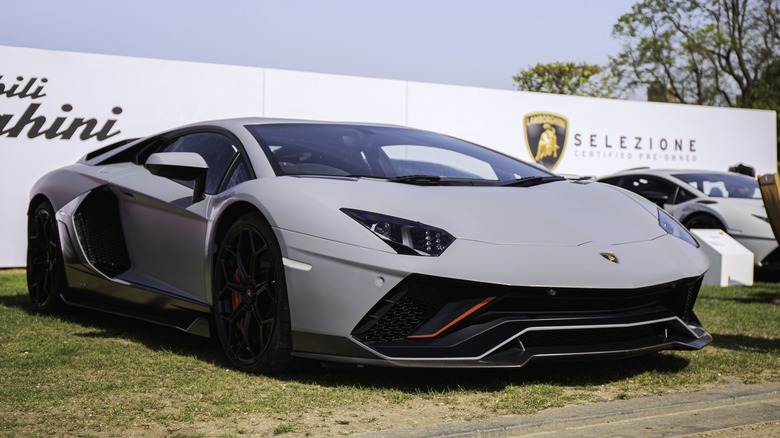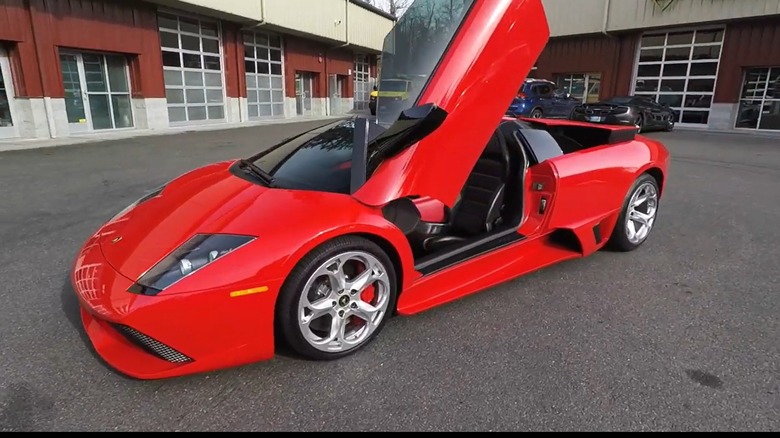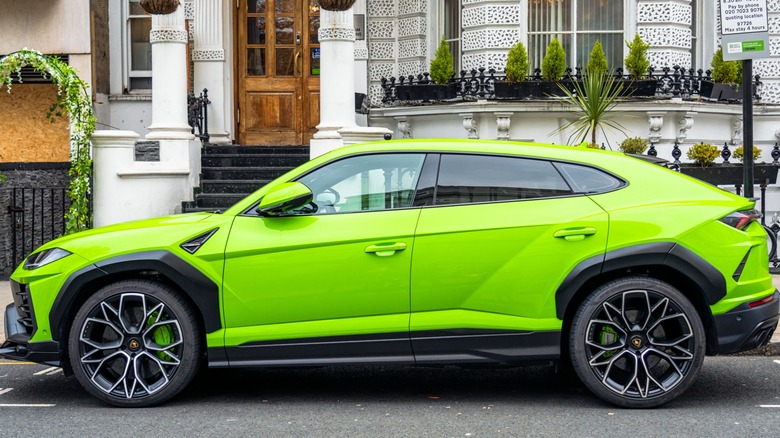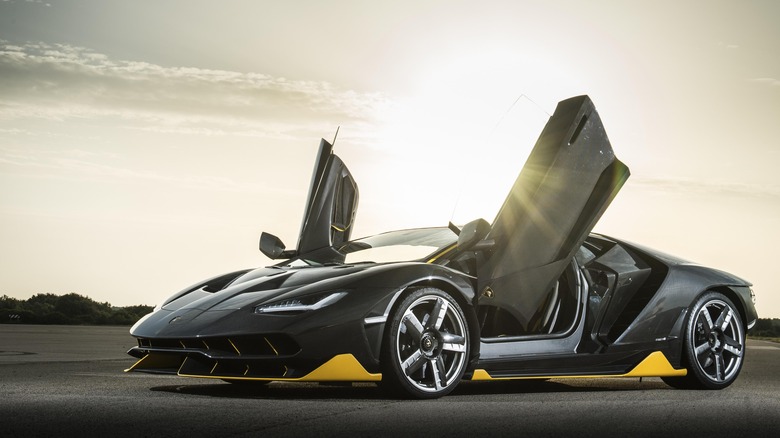13 Most Expensive Lamborghinis Of All Time, Ranked
When Ferruccio Lamborghini established his car company in 1963, his unrelenting desire to improve and innovate inspired the creation of now iconic models such as the Miura and later the Countach. Today Lamborgini supercars are among the best-performing, most exotic, and sometimes most outrageous automobiles on the road.
Their prices reflect those features, and numerous characteristics key to the Lamborghini legend contribute to the high initial prices of these exotic cars and help them maintain a high resale value. Many iconic Lamborghinis are produced in limited numbers, use high-quality components such as carbon fiber or leather, and operate as high-performance vehicles, all while being backed up by the Lamborghini badge.
For many buyers, even the least expensive Lamborghini on this list is too expensive for most, but it is always fun to see just how astonishing the pricing for some of the most famous vehicles to ever wear the Raging Bull emblem can get. Here are 12 of the most expensive Lamborghinis of all time.
Lamborghini Veneno Roadster: $8.3 million
In 2014, Lamborghini celebrated its 50th anniversary with the introduction of the Veneno Roadster offered at a base price of $4.5 million. Only nine cars were made, and one model fetched a price of $8.3 million in 2019, making it the most expensive Lamborghini ever sold at an auction.
Lamborghini engineers designed the car's shape for optimal aerodynamics to achieve maximum acceleration and ensure stability when powering through sharp curves. The forward-sloping front end that transitions smoothly into the windshield acts like a large aerodynamic wing. The Veneno Roadster is built with a smooth underbody that flows into a substantial diffuser encompassing the four ample exhaust pipes, and optimal engine cooling is achieved via large openings that direct airflow to the rear wing.
The divided rear fenders borrow their shape from race cars optimizing airflow on the back end. The adjustable rear wing is the result of years of motorsport experience and extensive aerodynamic simulation creating an interaction with the rear diffuser that produces the downforce needed to hold the road through tight turns.
The Veneno Roadster is made almost entirely from carbon fiber including its monocoque, all the body panels, and most of the interior, resulting in a weight of just 3,200 lbs and exceptional performance. Like its counterpart, the Veneno Coupé, the Roadster is equipped with a mid-mounted 6.5-liter naturally aspirated V12 engine that produces 740 hp and accelerates the supercar to 62 mph in a blistering 2.9 seconds on its way to a top speed of 221 mph.
Lamborghini Veneno Coupé: $4.5 million
Lamborghini made only 13 Veneno hypercars, nine of which were roadsters while the remaining four were coupes. Three coupes were sold and a fourth resides at the Museum of Lamborghini Technologies in Sant'Agata Bolognese. Lamborghini offered the Veneno with an MSRP of $4.5 million but the supercar most likely sold for much more.
Equipped with the same engine as the roadster, a 6.5-liter naturally aspirated V12 producing 740 hp at 8,400 rpm and 507 lb-ft of torque at 5,500 rpm, the performance is identical. The mill is coupled to a seven-speed manual gearbox with five different driving modes, sending power to a permanent all-wheel drive system. This means that this version of the Veneno also accelerates to 62 mph in just 2.9 seconds to a maximum speed of 221 mph. Carbon-ceramic brakes with discs and aluminum fixed calipers with six pistons in the front and four pistons in the rear ensure a short stopping distance.
The body, made with aircraft-grade carbon fiber, and the aluminum front and rear subframes contribute to its lightweight. Lamborghini used components designed for the track including a pushrod suspension with horizontal spring-damper units to construct the Veneno. Even the interior theme, with significant use of carbon fiber, is driven by weight savings. The 20-inch front wheels and 22-inch rear wheels are fitted with Pirelli P Zero tires and the center-locking hubs allow for quicker changes for owners who want to simulate a track pit stop.
2021 Lamborghini Sián: $3.5 million
The Lamborghini Sián represents a technological breakthrough for the supercar company as its first-ever hybrid production car. The 6.5-liter naturally aspirated V12 engine generating 774 hp and 531 lb.-ft of torque combines with a 48-volt e-motor producing 34 hp and 26 lb-ft of torque for a total of 808 hp, making it the automaker's most powerful road car.
The Sián uses supercapacitor technology to power the e-motor instead of traditional lithium-ion batteries. It can store and deploy a greater amount of energy at a faster rate than a lithium-ion battery of the same weight. Although the supercapacitor can deplete quickly, it can also recharge almost immediately with regenerative braking, and it helps smooth out the harshness between shifts by filling in the torque gaps.
The Sián is fitted with a 7-speed ISR semi-automatic transmission and sends power to all four wheels. The supercar accelerates from 0 to 62 mph in under 2.8 seconds and reaches a top speed of 217 mph. The Sián handles all that power by gripping the road with all-wheel traction and rear-wheel steering for taming the most challenging curves. Production began in 2020 and will continue through 2023 until the limit of 63 coupes has been reached. All have been sold for at least $3.5 million each.
[Featured image by Alexander Migl via Wikimedia Commons | Cropped and scaled | CC BY-SA 4.0]
Lamborghini Sesto Elemento: $2.7 million
In 2011, Lamborghini named its new car, Sesto Elemento, after the sixth element of the Periodic Table: carbon. The name pays tribute to the extensive use of carbon fiber throughout the vehicle, resulting in an extremely lightweight supercar with exceptional acceleration and performance. In fact, the Sesto Elemento weighs a mere 999 kilograms.
Lamborghini built the car using the RTM-Lambo forged carbon fiber technique developed by the Advanced Composites Research Center. The method is also used for the construction of the automaker's flagship Aventador. Not only are the bodywork and other components made of carbon fiber, but the interior lacks most of the typical road car comforts to save weight. It is even devoid of seats. The driver sits on cushioning attached directly to the bodywork.
The V10 engine mated to a six-speed E Gear semi-automatic transmission produces 562 hp (570 CV) at 8,000 rpm and 539 lb-ft of torque at 6,500 rpm. The exceptional weight-to-power ratio of only 1.75 kilograms per CV results in unparalleled performance, accelerating the supercar from 0 to 60 mph in a blistering 2.5 seconds on its way to a top speed of over 200 mph. Lamborghini sold 20 Sesto Elemento — made for the track only — for a price of 1.8 million euros each, but in 2022 a model went up for sale at $2.7 million.
Lamborghini Aventador J: $2.8 million
The stunning Aventador J roadster is a one-off open-top supercar made in 2012 is neither a concept car nor a race car, but instead, a road-legal production car — if the term can be applied to a single unit. Although the J version engineers leveraged design features from the standard Aventador released the same year, removing the roof created a significant challenge. They redesigned the carbon fiber monocoque and added two safety bars behind the driver and passenger to maintain structural integrity lost with the roof removal.
The Aventador J was street-legal, but many of its features suggested a track car. It had no windshield, windows, or doors, and air conditioning and navigation were absent to save weight. Like most supercars, the J has countless components made of carbon fiber, including the rear wing and the aggressive-looking front spoiler finished in clear carbon fiber. The interior features seats, dashboard, and door panels made of Carbonskin, a soft and lightweight Lamborghini patented material made with woven carbon fibers.
The Aventador J is equipped with a 6.5-liter naturally aspirated V12 generating 691 bhp at 8,250 rpm and 509 lb-ft of torque at 5,500 rpm. The one-off supercar accelerates from 0 to 60 mph in 2.8 seconds and reaches a top speed of 186 mph. The ultra-limited edition Aventador J sold for $2,800,000, making it one of the most expensive Lamborghini automobiles ever produced.
[Featured image by Dwrgodden via Wikimedia Commons | Cropped and scaled | GNU Free Documentation License]
2022 Lamborghini Countach: $2.6 million
In 2022, Lamborghini executives decided to revive the Countach after 32 years. While the new Countach's distinctive throwback looks pay homage to the original, the performance and comfort represent significant advances in supercar technology.
The sharp edges and extreme angles that characterize the modern Lamborghini supercars were replaced by an overall smooth-flowing wedge shape. The triple hexagon taillight setup and quad-exhaust on the new Countach are almost identical to the original, and the car also boasts trademark hexagonal wheel arches and scissor doors. However, Lamborghini chose to leave off those oft-troublesome pop-up headlights and the fixed wing of the early models. The modern version has a carbon fiber monocoque chassis and body panels that help reduce the weight to 3,516 pounds.
The modern car, whose MSRP starts at $2.6 million, is configured in a hybrid setup. The 6.5-liter V12 gas engine producing 769 hp at 8,500 rpm and 531 lb-ft of torque is electrically assisted by a 48-volt electric motor that adds 33 hp (25-kW) and 26 lb-ft of torque for a total of 802 horsepower. The power is sent to all four wheels via a seven-speed automated manual transmission, which allows this supercar to accelerate from 0 to 60 mph in a mere 2.8 seconds and reach a top speed of 221 mph.
Lamborghini Reventón Roadster: $2.2 million
The Lamborghini design team visited a European NATO base to study the F-22 Raptor fighter jet when seeking inspiration for the Reventón's shape. The limited-edition supercar, first introduced in 2008, has since become one of the most sought-after vehicles by high-performance sports car enthusiasts, as Lamborghini produced only 15 Reventón Roadsters following the limited production of 21 coupés. The two models are nearly identical except for the roof and power output.
Although the Reventón design is based on the Murciélago, it boasts much more carbon fiber, including most of the bodywork and the monocoque. For the roofless version, Lamborghini engineers added only minimal reinforcement to an already robust Reventón leaving the Roadster to weigh in at 3,725 lbs.
Equipped with a 6.5-liter all-aluminum V12 with four valves per cylinder featuring variable valve timing, the Roadster produces 670 hp at 8,000 rpm and 487 lb-ft of torque sent to all four wheels. The open-top version accelerates from 0 to 60 mph in just 3.4 seconds and has a top speed of 205 mph, slightly slower than the coupé most likely due to the heavier weight and slight differences in aerodynamics. The estimated value of a 2008 Lamborghini Reventón coupé ranges from $1.8 to $2.1 million, making the rarer Roadster value closer to $2.2 million.
Lamborghini Mansory Carbonado GT: $2 million
The Carbonado GT was developed from the Aventador LP700-4, a high-performance lightweight Lamborghini already built with ample carbon fiber. However, Mansory adds even more.
A redesigned front end features a carbon fiber splitter, a new hood, and carbon fiber side skirts, while the rear gets an enormous carbon fiber diffuser and rear wing. The Carbonado GT also boasts exposed carbon fiber wing mirrors, wider fender flares, and new side vents that augment cooling by increasing the airflow to the mid-mounted engine and the rear brakes. The Mansory supercar is finished in shades of copper merging with deep blacks. Significant modifications were made to the interior as well. Carbon fiber racing seats help keep the weight down and the revised dashboard center console and a redesigned sports steering wheel give the GT a different look.
Mansory installed a new ECU and exhaust system in the GT to improve performance. While the power output of the Lamborghini Aventador LP700-4 6.5-liter V12 is impressive generating 690 bhp at 8,250 rpm and 509 lb-ft of torque at 5,500 rpm, the upgraded engine of the Carbonado GT produces 730 hp and 509 lb-ft of torque. The increase in power for this $2 million car produces an acceleration from 0 to 62 mph in just 2.8 seconds and a top speed of 221 mph.
Lamborghini Mansory Carbonado Apertos: $1.2 million
Lamborghini first presented its limited edition Aventador J, a one-off, open-top supercar at the Geneva Auto Show in 2012. At the same show, Mansory unveiled its completely tuned and modified Aventador LP700-4, the Carbonado Apertos. Mansory replaced all the Aventador body panels and parts with custom-made carbon fiber components giving the roadster a stealthy carbon texture appearance. The redesigned roadster included a new lower and deeper front bumper, large air intakes up front, massive side skirts, and wider fenders. The rear section features a stylish diffuser with fins that act as struts to support the rear wing.
While the Aventador comes from the factory with an interior most luxury supercar buyers long for, the Apertos has been upgraded to include black and yellow leather, Alcantara upholstery, and a matte carbon fiber finish everywhere. However, it is the B2 bomber-style weave stitching pattern on the seats, central console, and roof panels that distinguishes the car from its competition.
Mansory modified the Aventador's already impressive 6.5-liter V12 to give the Carbonado Apertos exceptional performance. The tuner upgraded the engine with motorsport pistons, connection rods, crankshaft, bearings, and cylinder heads. These changes along with the addition of twin turbochargers and a custom-made exhaust system resulted in an output of 1250 hp and 664 lb-ft of torque. The tuned roadster accelerates from 0 to 62 mph (100 km/h) in 2.6 seconds and reaches a top speed of 236 mph (380 km/h). The Mansory Carbonado Apertos is limited to just three units, each costing $1.2 million.
2022 Lamborghini Aventador Ultimae: $547K
After more than a decade as the flagship model of Lamborghini's line of exotic sports cars, the 2022 Aventador represented the last hurrah. Since its introduction, the supercar was a testbed for new technologies including the use of a carbon-fiber monocoque frame in place of one made with aluminum or steel.
In its last year, Lamborghini offered the Aventador in two models, a coupé or roadster. However, to celebrate the end of the line, the automaker built a limited edition of 600 (350 coupes and 250 roadsters) custom-equipped Aventadors designated the Ultimae. The mid-engine, all-wheel-drive, 2-door coupé or roadster is visually almost identical to the standard Aventador sans a few subtle details and some interior tweaks. While it still offers an inferior infotainment system and gas-guzzling fuel consumption, the custom car adds more horsepower.
The DOHC 48-valve naturally aspirated 6.5-liter V12 with aluminum block and heads and port fuel injection produces 769 hp at 8,500 rpm and 531 lb-ft of torque at 6,750 rpm. It is coupled with a 7-speed single-clutch automated manual that shifts without the smooth transition expected from a high-priced performance car. Lamborghini offered the Ultimae Coupe and Roadster for a base MSRP of $498,258 and $546,847, respectively.
2009 Lamborghini Murciélago: $382K
In 2001, Lamborghini introduced the Murciélago, named for a legendary nineteenth-century Spanish bull, as the successor to the famed Diablo. The muscular and aggressive style of the first models prompted some to label the supercar as outrageous, but the sleek, aerodynamic body hosting scissor doors is guaranteed to attract the attention of onlookers even if traveling at slow speeds.
Available as a coupé or convertible the roomy interior boasts comfortable leather seating and an infotainment system with navigation and premium sound. The roadster's soft-cloth Targa top is a challenge to use, and its insecure attachment mechanism makes it safer to remove when driving the car over 100 mph. The standard all-wheel drive gives the supercar sporty handling and helps it achieve remarkable acceleration, while an adjustable suspension allows the driver to raise the front end to avoid driveway and parking lot scraping.
The Murciélago is equipped with a 6.5-liter V12 that produces 632 hp at 8,000 rpm and 660 lb-ft of torque. The naturally aspirated engine is mated to a standard equipment six-speed manual transmission with a gated metal shifter but is also offered with an optional paddle-shifted e-gear manual. The car is fitted with front, center, and rear limited-slip differentials. The Murciélago accelerates from 0 to 62 mph in 3.4 seconds and achieves a top speed of 211 mph. At introduction, the Lamborghini Murciélago was among the most expensive cars on the market, with a base MSRP of $382,000.
2022 Lamborghini Urus: $221K
The 2022 Lamborghini Urus may be the ideal vehicle for the supercar enthusiast looking for performance features such as all-wheel drive, sport-tuned suspension, and the conveniences of an SUV. The front-engine, 5-passenger, 4-door hatchback (SUV) is equipped with a 4.0-liter twin-turbo V-8 that generates 641 hp at 6000 rpm and 627 lb-ft at 2250 rpm. Power is sent to all four wheels via an eight-speed automatic transmission. The Urus is one of the quickest SUVs in its class, accelerating to 60 mph in 3.6 seconds with a top speed of 190 mph.
Carbon-ceramic brakes keep this speedy SUV in check, while a front and rear multilink sport-tuned suspension along with permanent all-wheel drive and quick steering give the car stable high-speed cornering. The SUV is fitted with air springs at all four wheels allowing adjustable ride heights in various drive modes.
Lamborghini offers the Uru with standard features that include leather upholstery, heated front seats, 21-inch wheels, adaptive LED headlights, and an Audi-sourced 12.3-inch dual touchscreen infotainment system. Pricing begins at $221,506.
Lamborghini Centenario - $2,695,000
Design-wise, the Centenario is arguably the most Lambo Lambo in the post-millennium era. There are elements of Aventador and Huracan in there, and it even foreshadows the Sian a little bit. It's like an over-the-top celebration of everything that followed the Diablo, from its looks to its borderline ridiculous levels of performance. Its looks are so staggering you'd be silly to customize it — even if you may be obliged to do so in a weird way.
Under the hood is a 6.5 liter naturally aspirated V12, capable of producing a staggering 759 horsepower and 690 lb-ft of torque. In context, that's over 140 more horsepower than the naturally aspirated V12 in a McLaren F1 will give you. Though the Cenrenario's top speed of 217 mph means the McLaren's record is safe, it's still one of the fastest cars Lamborghini has ever built. The vehicle's 0-60 time is also very impressive. You'll hit that benchmark in just 2.8 seconds should you choose to floor it.
The price is unlikely to go down due to the vehicle's rarity. Lamborghini capped the run of Centenarios at 40, with half of those being roadsters and the other half being coupes. As often happens when prestigious brands build an extremely limited run of cars, the vehicles were all sold out before it was unveiled. In 2016, the Centenario was priced at $1.9 million, the same for both the roadster and coupe versions. Fast-forward eight years, and that price has obviously increased—though it hasn't exploded to the same degree as other ultra-rare exotics. At the time of writing, one example of the vehicle is being sold for $2,695,000.
